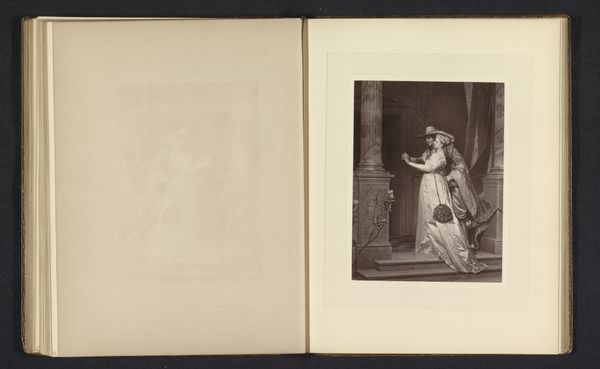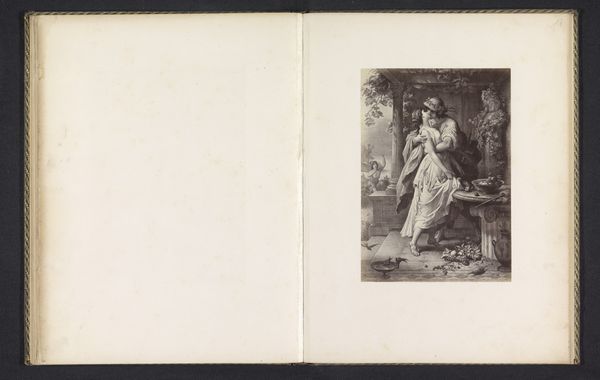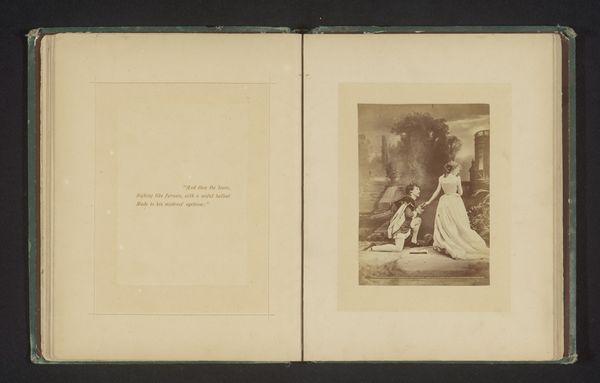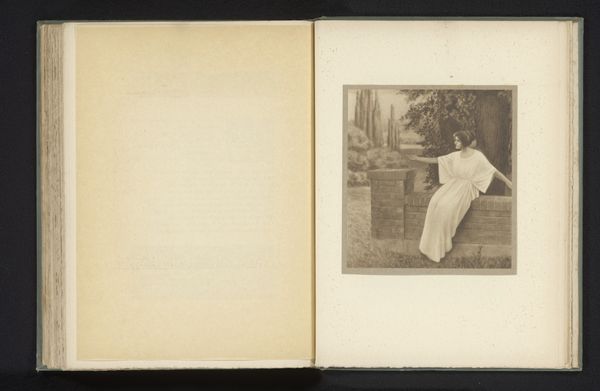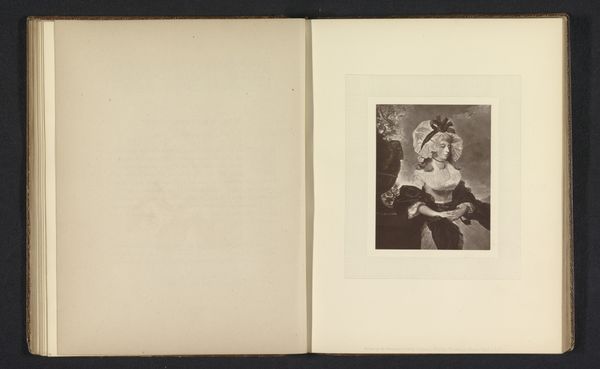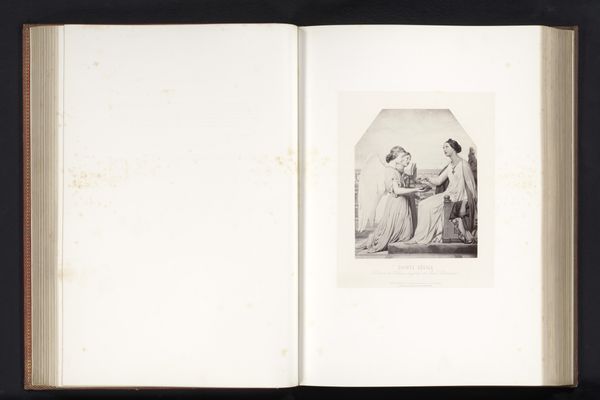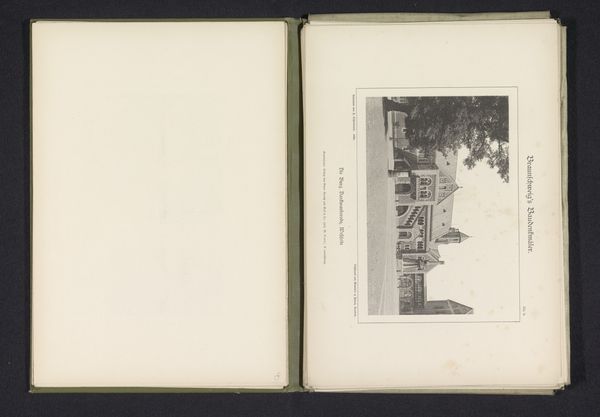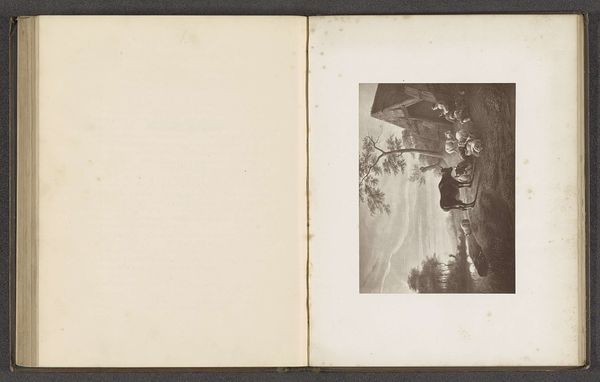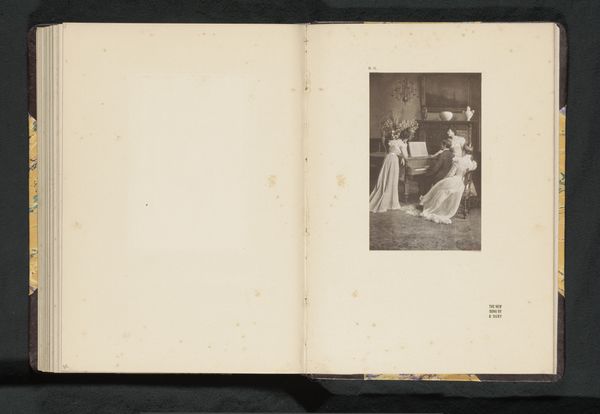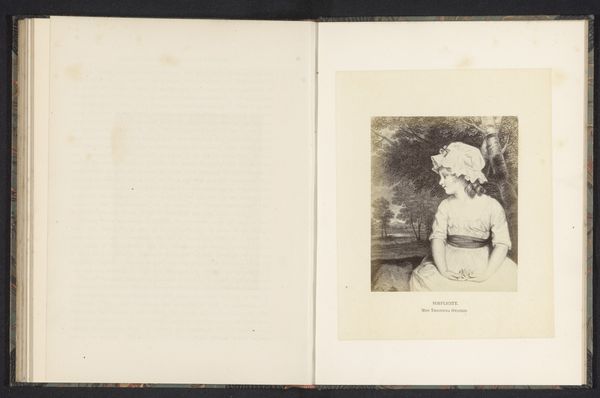
Fotoreproductie van een prent naar een schilderij van een meisje met een poederdons door Fritz Zuber-Buhler before 1874
0:00
0:00
print, photography
#
portrait
# print
#
photography
#
genre-painting
#
academic-art
Dimensions: height 120 mm, width 97 mm
Copyright: Rijks Museum: Open Domain
Curator: Looking at this image, I am immediately drawn to its gentle, almost wistful quality. The light seems to catch the girl in a moment of playful innocence. What's your impression? Editor: Innocence, definitely. It’s got that old-timey charm, like a page ripped right out of a beloved storybook. Reminds me of rainy afternoons and secrets whispered with a friend. Curator: Indeed. What we’re examining is a photographic reproduction of a print that predates 1874. The print itself was made after a painting by Fritz Zuber-Buhler, titled “Fotoreproductie van een prent naar een schilderij van een meisje met een poederdons” – a girl with a powder puff, essentially. It’s an intriguing example of academic art. Editor: Ah, Zuber-Buhler. He had a knack for these sweet, sentimental scenes, didn't he? A young girl, captured mid-moment, the powder puff up to her cheek. The whole scene has an air of the boudoir, but miniaturized for childhood. Almost comical? Curator: Precisely. While seemingly innocuous, it raises questions about the representation of girlhood during the period. Is this a tender portrayal of youth, or does it partake in a subtle sexualization, aligning the young girl with future roles of beauty and domesticity? We need to contextualize it within the Victorian obsession with innocence alongside the period’s emerging consumer culture around cosmetics. Editor: You know, you're totally right. On one hand, it's all cherubic sweetness, but then you realize that she's mimicking grown-up beauty rituals. The puff of powder – is it a harmless game, or is it about grooming a girl into a woman's role? Curator: It reflects the ambiguity present in the visual culture of that era, where the aesthetic of innocence coexisted alongside increasingly visible commodification of the female image. It prompts the question: who is this performance of girlhood for, and what does it communicate to contemporary audiences? Editor: Wow. Suddenly that innocent little puff feels a lot heavier. I went from thinking it was charming to seeing the undercurrents. Makes you look at every ‘simple’ image twice. Curator: Absolutely. And by delving into the broader historical narrative surrounding images such as these, we’re better able to challenge what we see and question their power to influence perception, then and now. Editor: That is such a fantastic point. Thank you for unveiling all the social layers within something that felt simple. It changed everything.
Comments
No comments
Be the first to comment and join the conversation on the ultimate creative platform.
